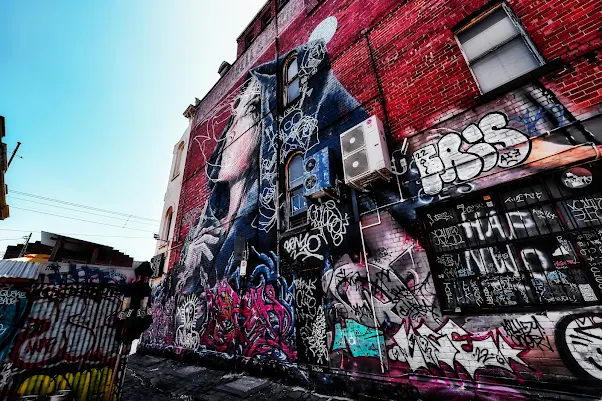Fitzroy Murals are vibrant and hippie.
Fitzroy, Melbourne's oldest suburb, has transformed into a vibrant canvas of street art, reflecting its evolution from a working-class area to a bohemian hub. Its laneways and building facades are adorned with an eclectic mix of murals, graffiti, and installations by both local and international artists. Notable works include the iconic 1984 Keith Haring mural on Johnston Street, the photorealistic portraits by Smug, and the intricate blue patterns of Lucas Grogan. Artists like Rone and Adnate have also left their mark, contributing to the suburb's dynamic and ever-changing art scene. Streets such as Brunswick, Smith, and Gertrude, along with hidden alleys, offer a free, open-air gallery that celebrates creativity and cultural expression.
Sony A7RV
FE 24mm f1.4 GM
Linking Mural Monday
Notes from a podcast
1. Genuine Confidence: People are drawn to those who are secure
in themselves without being arrogant. Confidence shows through body language,
tone of voice, and how someone carries themselves.
2. Active Listening: Truly paying
attention when someone speaks, asking follow-up questions, and showing interest
in others’ stories makes people feel valued and appreciated.
3. Empathy and Understanding: Being able
to relate to others’ feelings and perspectives builds trust and deepens
connections.
4. Positive Body Language: Open gestures,
eye contact, and a warm smile can instantly make you more approachable and
likable.
5. Authenticity: Being true to yourself
instead of trying to fit into someone else’s expectations resonates with
people. Authenticity often comes across as refreshing and trustworthy.
6. Humor and Playfulness: A good sense of
humor and the ability to not take yourself too seriously makes interactions
light-hearted and enjoyable.
7. Generosity of Spirit: Complimenting
others genuinely, being kind without expecting something in return, and
celebrating others’ successes foster goodwill.
8. Consistency and Reliability: Being
dependable and keeping your word builds respect and trust over time.
9. Non-Judgmental Attitude: People feel
safer and more comfortable around those who don’t pass judgment easily and
create an accepting environment.
10. Passion and Enthusiasm: Expressing
excitement and passion for your interests can be contagious, making people
naturally gravitate towards you.



















































